Granite Flooring: Durable & Stylish Floors for Your HomeIf you’re searching for a durable and elegant flooring option for your home, look no further than granite flooring. Granite is a natural stone that has been used for centuries in various architectural applications, from building blocks to cladding and flooring. Its unique properties make it an ideal choice for homeowners looking for long-lasting and low-maintenance flooring that adds value and sophistication to their homes.
Key Takeaways:
- Granite is a natural stone that is ideal for flooring due to its durability and unique properties.
- Using granite flooring can add value and sophistication to your home.
- Granite flooring requires minimal maintenance and can last for decades.
What is Granite?
If you’re considering granite flooring for your home, it’s important to understand what exactly granite is. Granite is a type of igneous rock that forms when magma slowly cools beneath the earth’s surface. It is composed mainly of minerals like feldspar and quartz, along with other minerals like mica and amphibole.
As the magma cools, it solidifies and forms large, visible crystals within the rock. These crystals give granite its distinctive speckled appearance and unique composition.
Granite is one of the hardest natural stones in the world, making it an extremely durable and long-lasting choice for flooring. It is also resistant to staining and scratching, making it a low-maintenance option for your home.
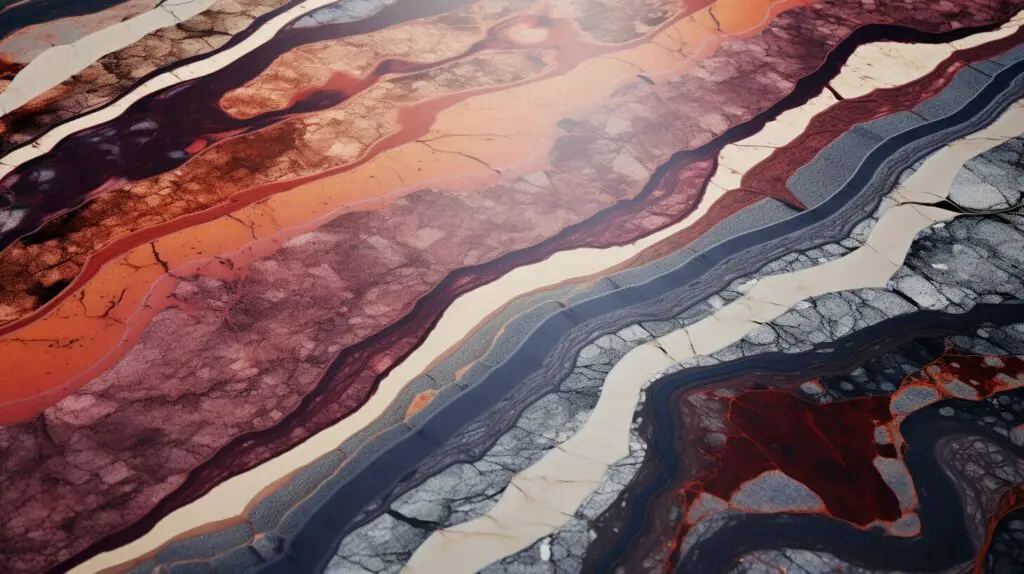

Properties of Granite
Granite is a type of igneous rock that is formed from the crystallization of magma under the earth’s surface. The composition of granite consists of minerals such as quartz, feldspar, and mica, making it a very hard and durable material. This makes it ideal for use in flooring, especially in high-traffic areas of your home.
One of the unique properties of granite is its resistance to scratches and abrasions. This means that even with heavy foot traffic or furniture movement, your granite flooring will remain looking new for years to come. Additionally, granite is resistant to heat, making it perfect for use in kitchen areas where hot pots and pans may be placed.
Furthermore, granite is also moisture-resistant, which is particularly important for flooring in areas such as bathrooms and kitchens where spills and moisture are common. The non-porous nature of granite makes it an ideal choice for these areas, as it helps to prevent the growth of mold and bacteria.
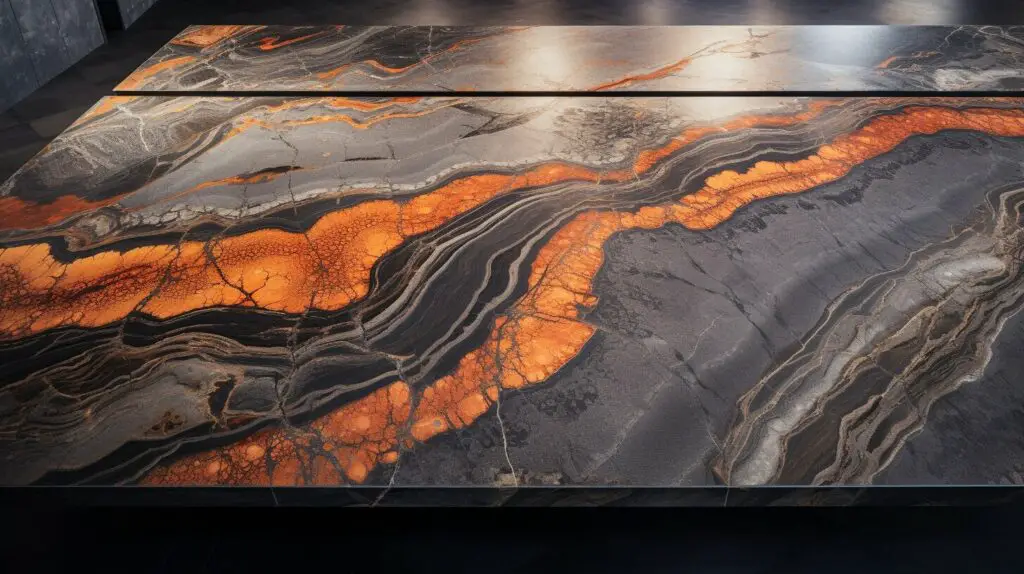

“Granite is an excellent choice for flooring due to its durability, resistance to scratches and abrasions, heat resistance, and moisture resistance.”
Advantages of Using Granite
Granite flooring is a popular choice for homeowners due to its many benefits. Here are some advantages of using granite in your home:
| Advantage | Description |
|---|---|
| Durability | Granite is one of the most durable natural stones available. It is highly resistant to scratches, stains, and heat, making it a great choice for high traffic areas in your home. |
| Easy Maintenance | Granite floors are easy to clean and maintain. Simply sweep or mop them regularly to keep them looking their best. |
| Aesthetic Appeal | Granite flooring adds a touch of elegance and sophistication to any room. Its natural beauty and unique patterns make it a stylish choice for any home. |
| Increased Home Value | Installing granite flooring can increase the value of your home and make it more attractive to potential buyers. |
In addition to its numerous advantages, granite is also an environmentally friendly option for flooring. It is a natural stone that can be recycled and reused, making it a sustainable choice for your home.
Overall, the benefits of using granite make it a popular choice for flooring in homes across the United States.
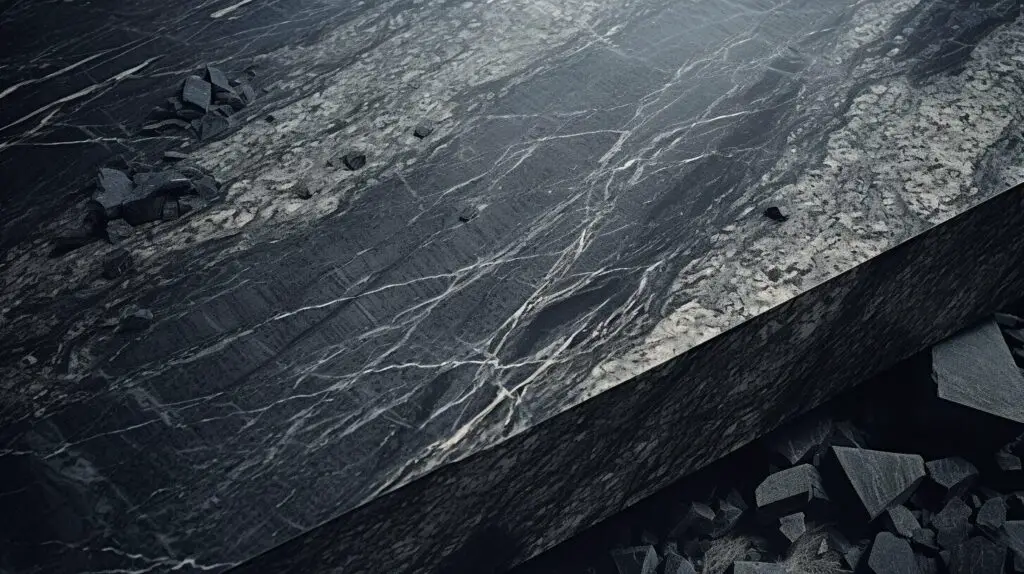

Drawbacks of Using Granite
While granite flooring has many advantages, there are also some drawbacks to consider before making your final decision. One potential issue is that granite can be quite heavy, which may require extra support before installation.
Another consideration is that granite can be quite expensive compared to other flooring materials. Additionally, because it is a natural material, each piece of granite will have its own unique color and pattern, which may not be to everyone’s taste.
Finally, granite can be quite slippery when wet, which may pose a safety hazard for some homeowners. However, there are anti-slip treatments available that can help mitigate this risk.


Despite these potential drawbacks, many homeowners still choose to install granite flooring in their homes. By weighing the pros and cons and considering your own personal preferences and needs, you can make an informed decision about whether granite flooring is right for you.
Things to Consider When Buying Granite
When considering granite flooring for your home, there are a few important factors to keep in mind to ensure you make the best choice for your needs.
One of the first things to consider is the type of granite you want for your flooring. There are different types of granite available, including honed and polished finishes, as well as different colors and patterns. You should choose a granite that complements the existing decor of your home and provides the aesthetic appeal you are looking for.
You should also consider the grade of the granite. Granite is graded from A to D, with A being the highest quality and D being the lowest. Choosing a higher quality granite may be more expensive, but it will have fewer imperfections and last longer.
Another important consideration is the thickness of the granite. Thicker granite is generally more durable and less likely to crack or chip, but it may also be more expensive. You should also consider the size of the space where you want to install granite flooring, as larger rooms may require thicker granite to support heavier foot traffic.
Finally, it’s important to consider the installation process and choose a reputable installer with experience in working with granite flooring. Improper installation can lead to cracking or other damage, so it’s important to choose a professional with the necessary skills and expertise.
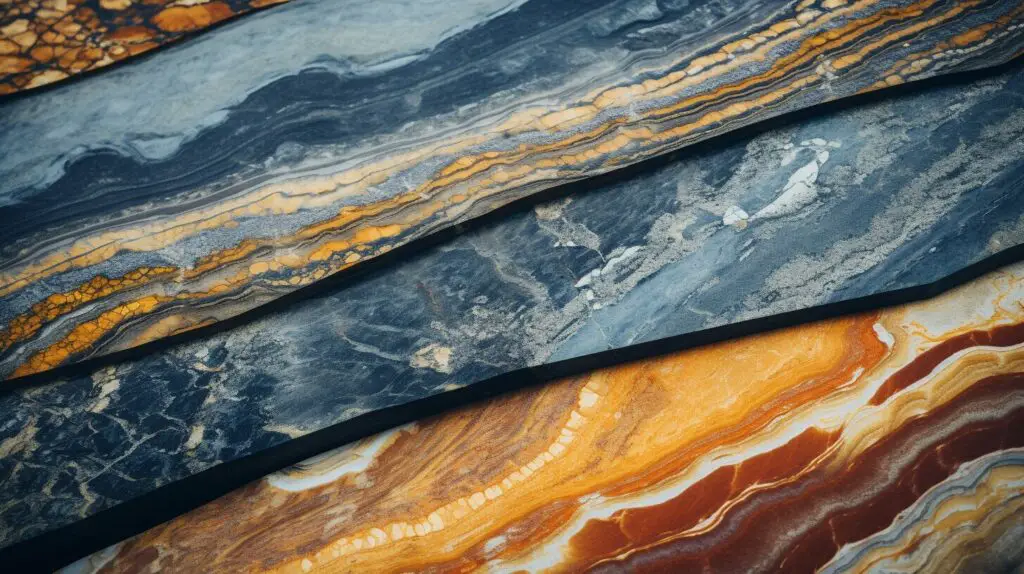

How to Take Care of Your Granite Flooring, Cladding, and Countertops?
If you want your granite flooring, cladding, and countertops to last for years, proper care and maintenance are essential. Here are some tips to keep your granite looking its best:
1. Clean spills promptly
Granite is relatively stain-resistant, but it’s best to clean up any spills as soon as possible to prevent any potential staining. Use a soft cloth or sponge with water and mild dish soap to wipe up spills.
2. Use cutting boards and trivets
Avoid placing hot pots or pans directly on granite countertops as it may cause damage. Always use trivets, coasters, and cutting boards when handling hot items or cutting food.
3. Avoid harsh cleaning chemicals
Avoid using harsh chemicals and acidic substances such as bleach, ammonia, vinegar, or citrus cleaners on your granite surfaces, as they can dull your granite’s finish and cause etching.
4. Seal your granite regularly
To keep your granite surfaces resistant to water and stains, you should regularly seal them. The frequency of sealing depends on the amount of wear and tear of the surface, but sealing every six months to a year is generally recommended.
5. Use specialized granite cleaners
Specialized granite cleaners are available in the market that are formulated to clean and protect your granite surfaces without damaging them. Always choose a cleaner that is specifically designed for granite flooring, cladding, and countertops.
By following these tips and properly maintaining your granite flooring, cladding, and countertops, you can ensure that they remain beautiful and durable for years to come.
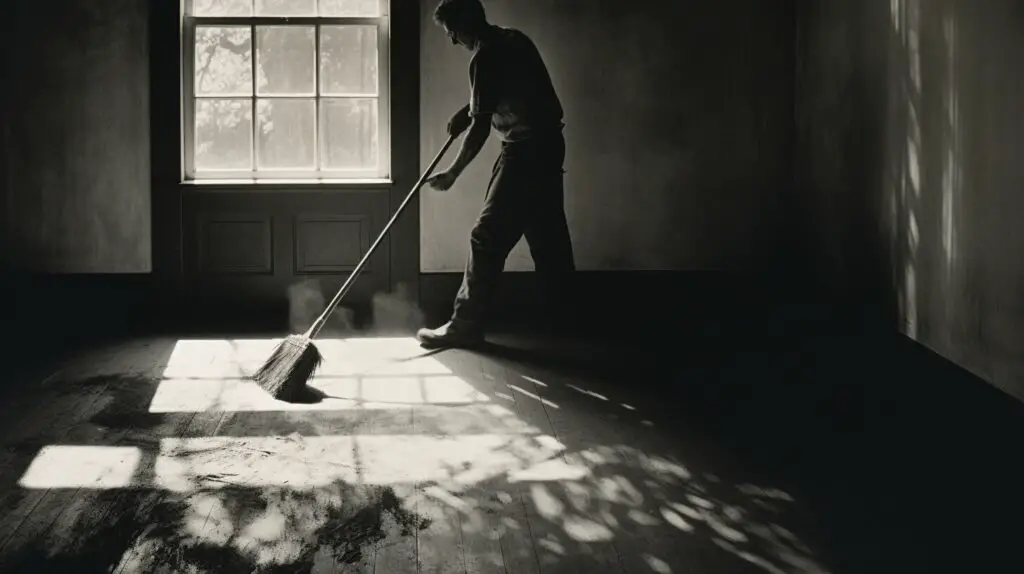

Immortalize Your Home with Granite
If you’re looking to add a touch of timeless elegance to your home, look no further than granite flooring. With its unique patterns and durability, granite is a flooring material that can truly last a lifetime.
Not only does granite offer unparalleled durability and scratch-resistant properties, but its natural beauty and versatile design options make it a popular choice for homeowners. Granite comes in a variety of colors and patterns, allowing you to choose a design that truly reflects your personal style.
Additionally, granite flooring can add value to your home, as it is considered a luxury material. So, not only will you be able to enjoy beautiful, durable flooring, but you may also see a return on your investment if you choose to sell your home in the future.
Whether you’re looking to renovate your existing home or build a new one, consider using granite flooring to add a touch of elegance and longevity to your space.
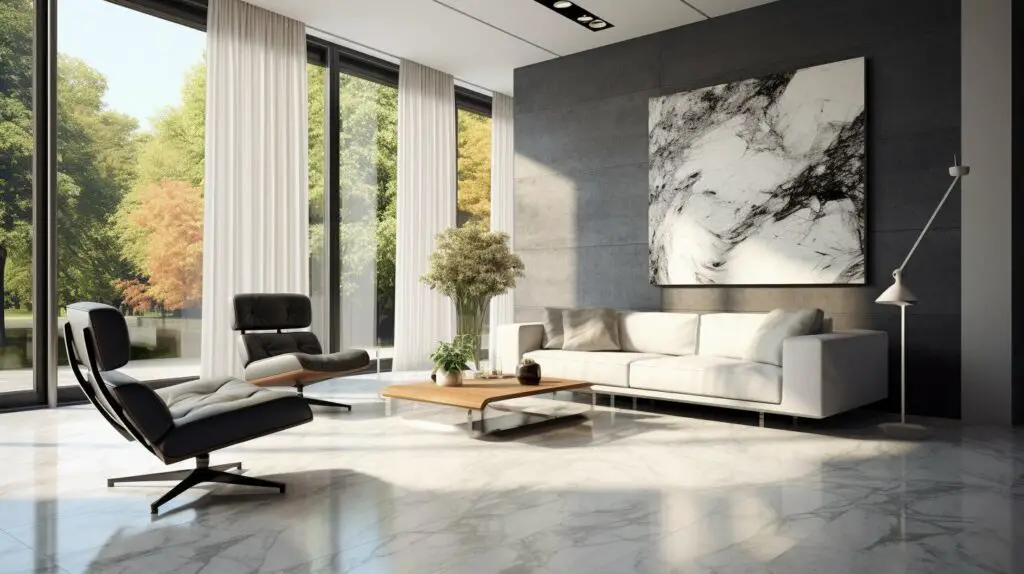

The Look of Granite Flooring
Granite flooring is a stylish and elegant addition to any home. Its unique appearance is a result of the composition of the rock, which includes minerals such as quartz, feldspar, and mica. These minerals create a speckled or mottled appearance that can range from subtle to dramatic, depending on the specific type of granite.
Granite flooring can also come in a variety of colors, from classic black and white to shades of pink, blue, and green. Some granite even has iridescent qualities, making it a stunning option for a feature floor or accent wall.
Design Ideas
One popular design trend with granite flooring is to create a checkerboard pattern with two contrasting colors. This can create a classic, timeless look that works well in traditional homes.
If you’re looking for something more modern, consider using large tiles in a solid color with minimal veining. This creates a sleek, contemporary look that is perfect for minimalist spaces.
Another popular option is to use a combination of granite and other materials, such as wood or ceramic tile. This can create a unique and eye-catching design that is sure to impress.
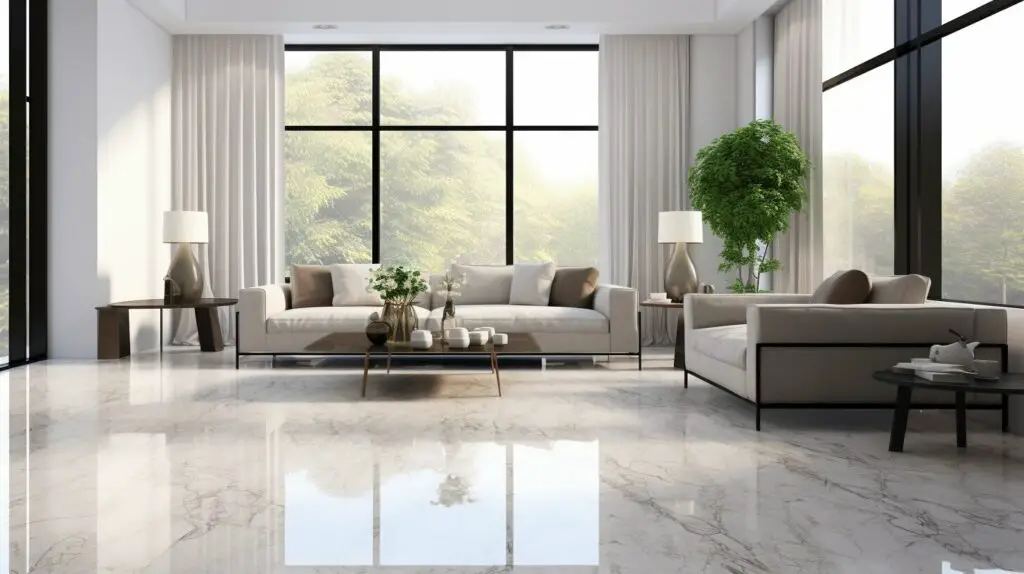

Whatever your design style, there is a granite flooring option that will work for you. Its durability, unique appearance, and timeless appeal make it a great investment for any home.
Cost of Granite Flooring
When considering granite flooring for your home, it is important to understand the factors that influence the cost. Size and thickness of the granite slab, quality and rarity of the granite, and installation costs are all factors that can impact the final cost.
The cost of granite can range from $50 to $200 per square foot, not including installation costs. However, with proper maintenance and care, granite flooring can last a lifetime, making it a worthwhile investment for your home.
It is important to consider your budget and desired look when selecting the type of granite for your flooring. Some granite varieties may be more expensive due to their rarity or unique coloring, while others may be more affordable and readily available.
When selecting a contractor for installation, be sure to get multiple quotes and ask for references to ensure you are getting the best value for your investment.
While the initial cost of granite flooring may be higher than other flooring options, the durability and long-lasting beauty make it a cost-effective choice in the long run.
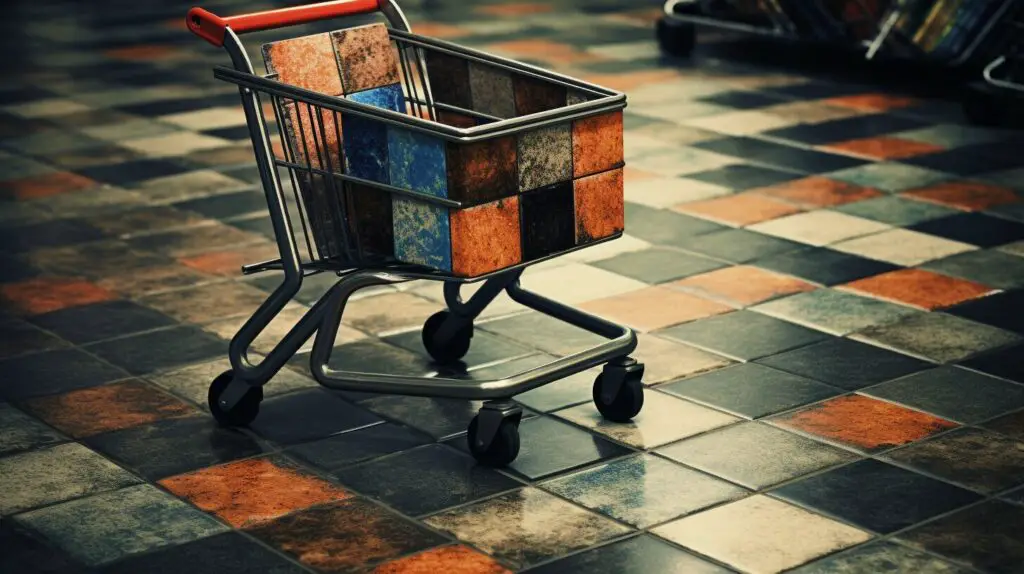

Top 10 Popular Granite Uses
Granite is a versatile and durable material that has many applications beyond just flooring. Here are the top 10 popular uses for granite:
- External Cladding: Granite is a popular choice for exterior cladding due to its strength and resistance to weathering. It can be used in its natural state or polished to create a sleek, modern look.
- Building Blocks: Granite blocks are commonly used in construction as they are strong and long-lasting. They can also be used for retaining walls or garden edging.
- Backsplashes: A granite backsplash can add a touch of elegance to any kitchen or bathroom. It’s easy to clean and can withstand heat and moisture.
- Bathroom Tiles: Granite tiles are an excellent choice for bathroom floors and walls. They are resistant to water and stains and come in a variety of colors and patterns.
- Mantelpieces: A granite mantelpiece can add a touch of sophistication to any living room. It can be polished or left in its natural state and is heat-resistant.
- Staircases: Granite stairs are a popular choice due to their durability and resistance to wear and tear. They can be polished to create a sleek, modern look.
- Kitchen Countertops: Granite is a popular choice for kitchen countertops as it is heat-resistant and easy to clean. It also adds a touch of luxury to any kitchen.
- Paving Stones: Granite paving stones are a popular choice for outdoor walkways and patios. They are slip-resistant and can withstand harsh weather conditions.
- Masonry: Granite can be used to create beautiful and intricate masonry work, such as archways, pillars, and statues.
- Furniture: Granite can be used to create unique and elegant pieces of furniture, such as tables and benches.
As you can see, granite has many uses beyond just flooring. Consider using granite in other areas of your home to add a touch of elegance and sophistication.
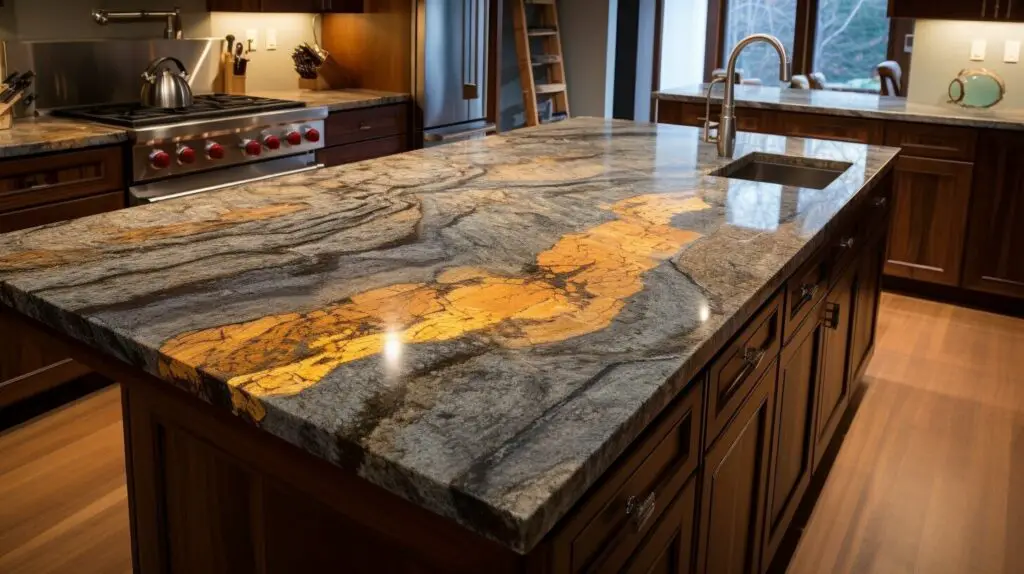

How is Granite Formed?
Granite is a type of igneous rock that forms from the slow crystallization of magma beneath the Earth’s surface. It is composed mainly of quartz, feldspar, and mica, and is known for its unique patterns and durability.
The process of granite formation occurs over millions of years as molten rock cools and solidifies. When magma begins to cool, crystals form and gradually grow larger as the temperature decreases. If the cooling process is slow enough, the crystals will become visible to the naked eye, and the result is typically a granular texture, hence the name granite.
Granite is commonly found in mountain ranges and is often the result of ancient volcanic activity. As the molten rock cools and solidifies, it can form into massive granite deposits that are mined for construction and decorative uses today.
There are many different types of granite, each with unique characteristics and appearances. Some popular varieties include black granite, white granite, and pink granite.
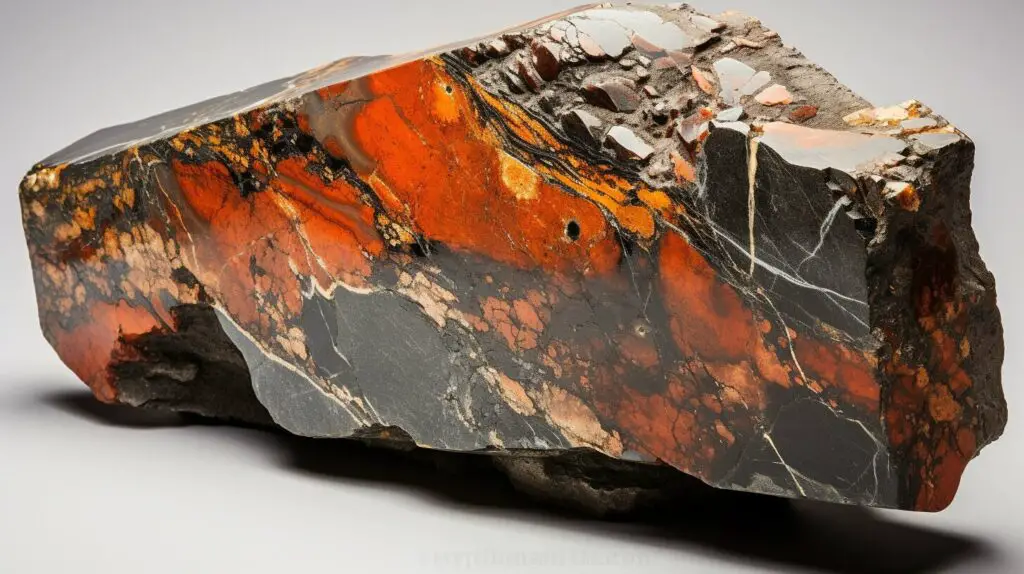

Understanding the geological process behind granite formation can help you appreciate the beauty and durability of this natural stone. Whether you’re considering granite flooring for your home or other decorative uses, you can be confident that this timeless rock is a solid investment for your property.
Can We Use Granite for Flooring?
Granite has been used for centuries as a durable and elegant building material in various applications, including flooring. In fact, it is one of the most popular natural stone materials used for flooring due to its unique properties and aesthetic appeal.
Contrary to popular belief, granite is not a fragile or delicate material that is unsuitable for use as flooring. In fact, it is considered to be one of the most durable and long-lasting flooring materials available on the market.
Granite is a natural stone that is formed over millions of years through the slow cooling and solidification of magma. It is composed of several minerals, including feldspar, quartz, and mica, which give it its unique pattern and color variations.
When choosing granite for flooring, there are several factors to consider, such as the type of finish, color, and size of the tiles. It is important to select a granite tile that is appropriate for your specific needs and preferences.
Overall, granite is an excellent choice for flooring due to its durability, aesthetic appeal, and unique properties. It can withstand heavy foot traffic, is resistant to scratches and stains, and is easy to maintain with proper care and cleaning.
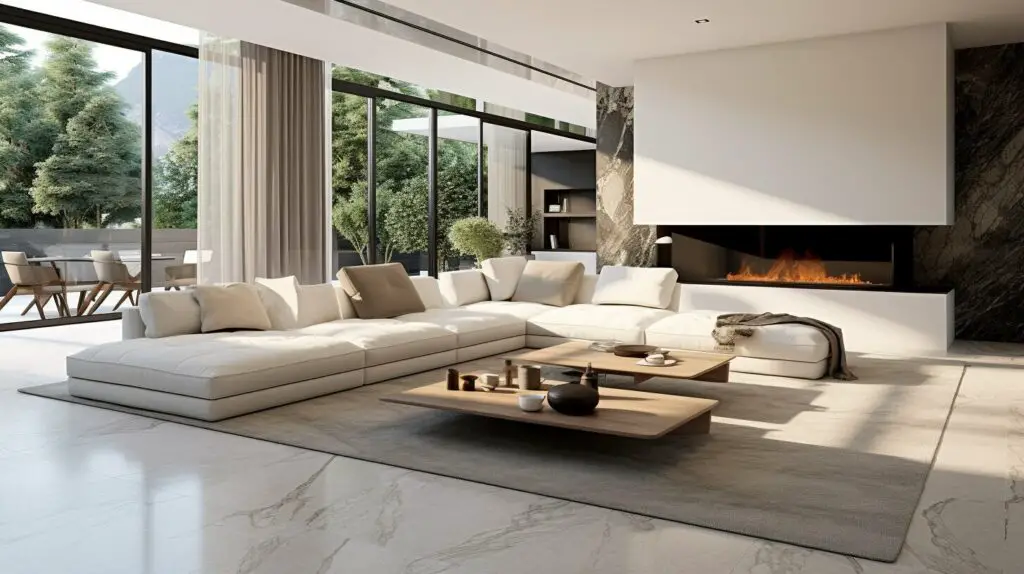

Benefits of Granite Flooring
If you are considering replacing or upgrading your home’s flooring, granite is an excellent option to consider. In addition to being aesthetically pleasing, granite is also incredibly durable and long-lasting.
One of the main advantages of granite flooring is its strength and durability. Granite is a natural stone that can withstand heavy foot traffic, scratches, and spills without showing signs of wear and tear. It is also a nonporous material, making it resistant to stains and moisture damage.
Granite flooring comes in a variety of colors and patterns, so you can choose a style that suits your personal taste and complements the existing décor of your home. The unique patterns and colors of granite can also add character and dimension to any room.
Another benefit of granite flooring is its low maintenance requirements. Routine cleaning with a damp mop and gentle cleaner is all that is needed to keep your granite floors looking beautiful for years to come. Additionally, granite is hypoallergenic, making it an ideal choice for those with allergies or respiratory issues.
Finally, investing in granite flooring can increase the value of your home. Granite is a high-end material that adds a touch of luxury and sophistication to any room. It can be a significant selling point when it comes time to put your home on the market.
Overall, the benefits of granite flooring are clear. From its durability to its aesthetic appeal, granite is a top choice for homeowners looking for a long-lasting and practical flooring material.
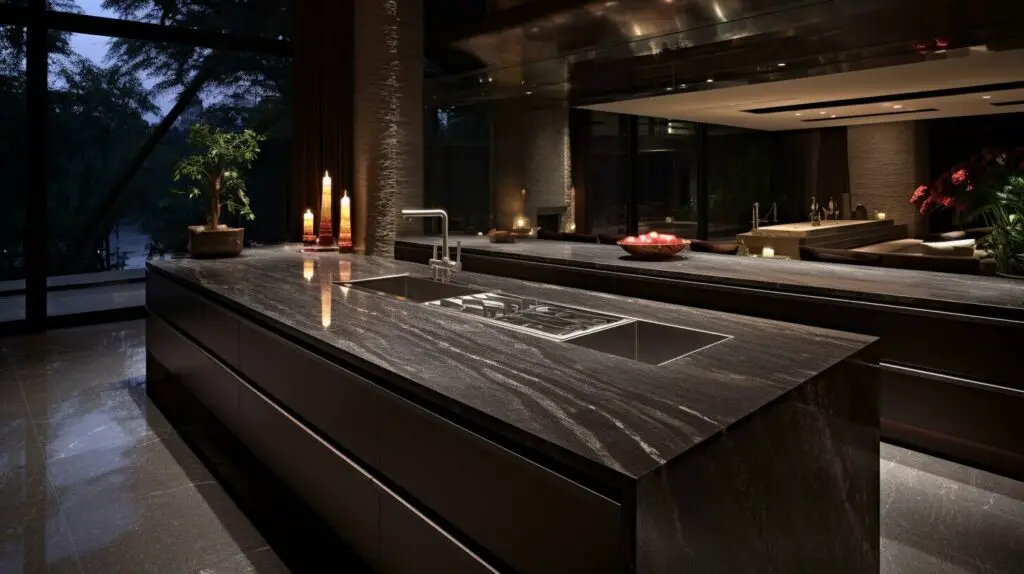

Cons of Granite Flooring
While granite flooring has many benefits, there are a few potential drawbacks to keep in mind when considering it for your home.
- Cost: Granite flooring can be expensive, especially if you’re opting for high-end or rare varieties of granite. Additionally, installation costs can add up, as granite is a heavy material that requires specialized tools and expertise to install properly.
- Maintenance: While granite is a durable material, it does require some maintenance to keep it looking its best. Granite should be sealed periodically to prevent staining and etching, which can mar its surface. Additionally, granite should be cleaned with a pH-neutral cleaner to avoid damaging its surface.
- Hardness: While granite is durable, its hardness can make it uncomfortable to stand on for extended periods. If you’re considering granite flooring for an area where you’ll be doing a lot of standing, such as a kitchen, you may want to consider adding a cushioned mat to alleviate fatigue.
Despite these drawbacks, many homeowners find that the benefits of granite flooring outweigh the challenges. With proper maintenance and care, granite flooring can last for decades, adding value and beauty to your home for years to come.


Forms of Granite for Flooring and Design Ideas
Granite flooring comes in a variety of forms, each with unique characteristics that allow for customization and versatility in design. The following are some of the most popular types of granite for flooring:
| Type | Appearance | Properties |
|---|---|---|
| Polished Granite | 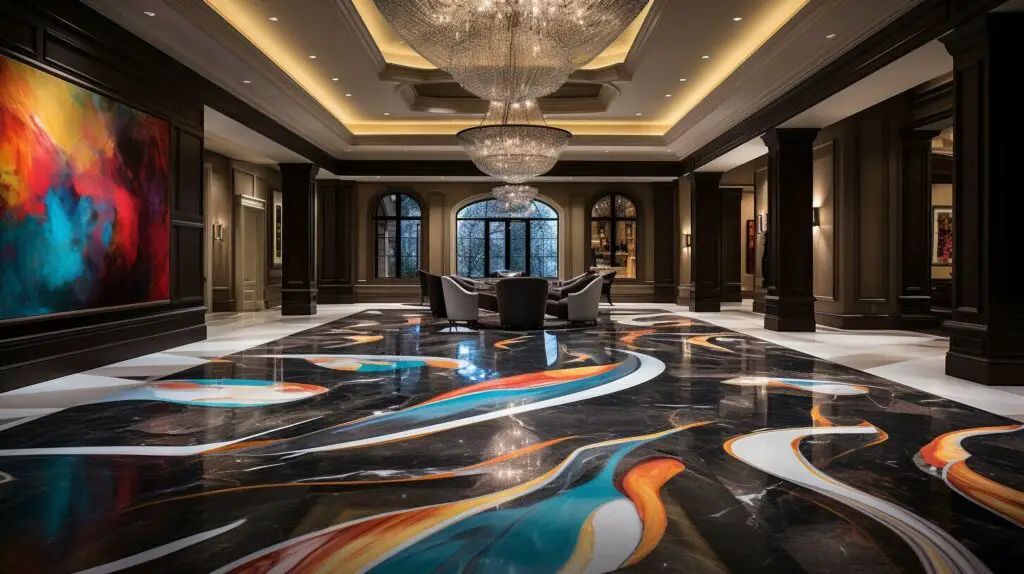  |
-Reflective surface -Scratch-resistant -Durable -Low maintenance |
| Honed Granite | 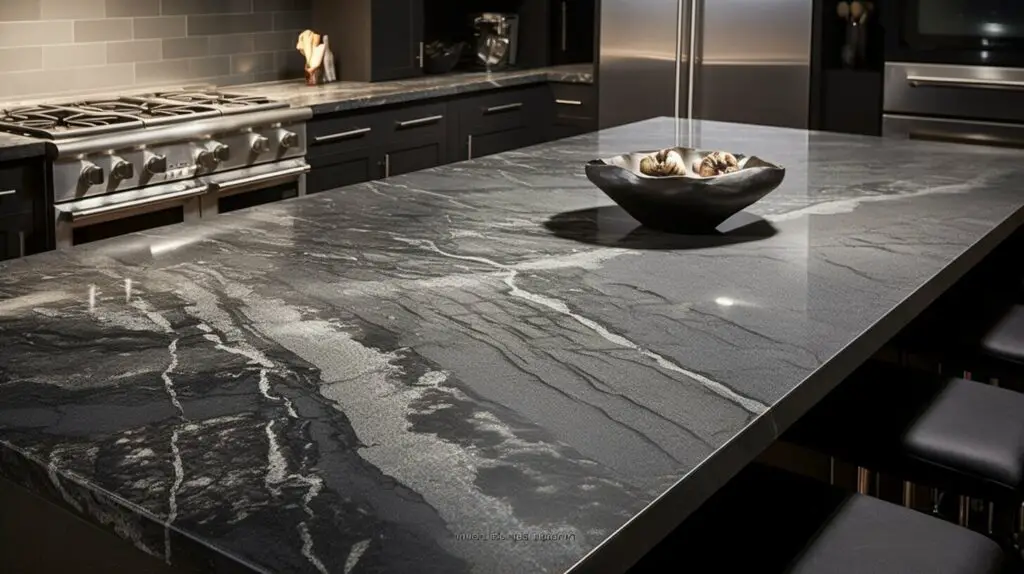  |
-Smooth, matte finish -Less reflective than polished granite -More porous, may require sealing |
| Flamed Granite | 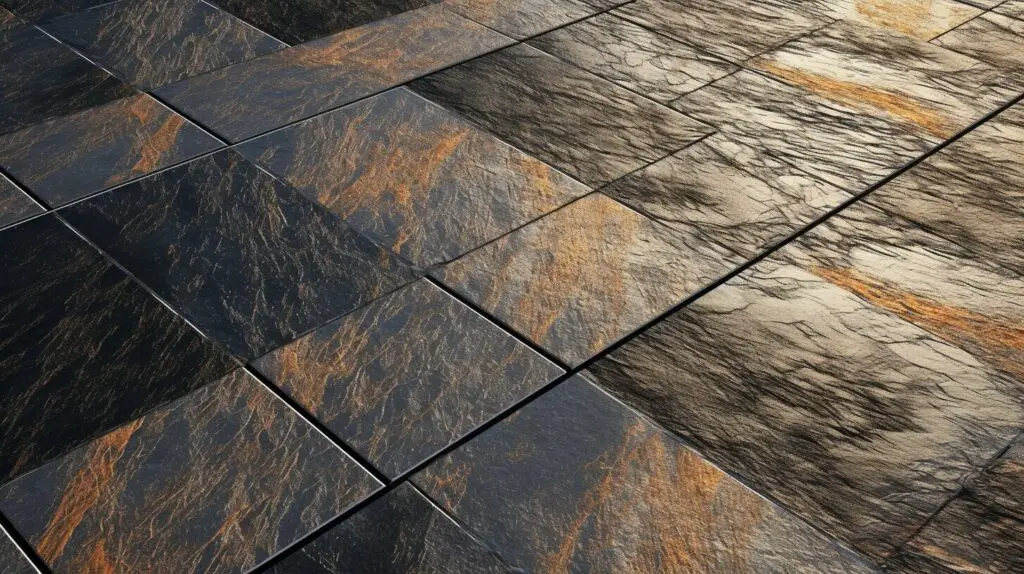  |
-Textured surface -Non-slip -Heat resistant -Best for outdoor use |
| Brushed Granite |   |
-Textured surface with a matte finish -Similar to honed granite -Suitable for high-traffic areas |
When considering a design for your granite flooring, you could opt for a classic, understated look by using a simple design or pattern with polished granite. On the other hand, a bold and modern look can be achieved with a unique flamed granite finish. Alternatively, a more rustic feel can be created with brushed granite, which has a rougher texture and a more natural appearance.
Another option is to mix and match different types of granite to create a unique pattern or design. For example, you could incorporate honed granite tiles with polished granite tiles for a subtle contrast. If you’re feeling adventurous, you could even add a splash of color by incorporating colored granite tiles into your design.
When it comes to design ideas, the possibilities are endless. Some popular designs include a checkerboard pattern, a herringbone pattern, or a border design. You could also consider using granite tiles to create a mosaic or intricate design.
No matter what design you choose, granite flooring adds a touch of elegance and durability to your home.
Conclusion
Granite flooring is an excellent choice for homeowners looking for a durable, stylish, and long-lasting flooring option. Its unique properties, such as its hardness, resistance to heat and scratches, and natural beauty, make it a popular option for high-traffic areas in the home.
While there may be some drawbacks to using granite flooring, such as the initial cost and potential installation challenges, the benefits far outweigh any concerns. With proper care and maintenance, granite flooring can last for decades and add value to your home.
When considering purchasing granite flooring, it’s essential to keep in mind factors like color and pattern, finish, and cost. Additionally, exploring other popular uses of granite, such as external cladding, backsplashes, and countertops, can help you create a cohesive look throughout your home.
By understanding the geological process of granite formation and the wide variety of forms available, you can make an informed and confident decision when choosing granite for your home. With its timeless beauty and durability, granite is sure to impress for years to come.
I hope this article will definitely help you. If you like this information please share it with your friends & If I have missed any information or you have any suggestions then you can mention them in the comments section for more such blog posts just click subscribe to myengineeringsupport.com so that you won’t miss any new post.
If you want a PDF copy of this,

Thanks For the Great Attention!
Good Bye & Take Care
Happy Learning
Also, Read,
POP Vs Gypsum Vs PVC Vs Grid False Ceiling – An Ultimate Comparision
Wall Mounted vs Floor Mounted Toilets
Related Video,
FAQ
Q: What is Granite?
A: Granite is a type of igneous rock that forms from the slow crystallization of magma beneath the Earth’s surface. It is composed mainly of quartz, feldspar, and mica, giving it a unique combination of strength and beauty.
Q: What are the properties of Granite?
A: Granite is known for its durability, resistance to heat and scratches, and low maintenance requirements. It is also available in a wide range of colors and patterns, making it a versatile choice for flooring.
Q: What are the advantages of using Granite?
A: Some of the advantages of using granite for flooring include its durability, longevity, and natural beauty. It is also resistant to stains, moisture, and bacteria, making it a hygienic choice for any home.
Q: What are the drawbacks of using Granite?
A: While granite is a popular flooring choice, it does have a few drawbacks to consider. It can be relatively expensive compared to other flooring options, and it may require professional installation due to its weight. Additionally, it can be cold underfoot, so it may not be the best choice for those living in colder climates.
Q: What should I consider when buying Granite?
A: When purchasing granite flooring, it is important to consider factors such as color, finish, thickness, and cost. It is also recommended to work with a reputable supplier or contractor and ask for samples to ensure you are satisfied with the final product.
Q: How do I take care of my Granite flooring, cladding, and countertops?
A: To keep your granite flooring, cladding, and countertops looking their best, it is important to clean them regularly with mild soap and water. Avoid using abrasive cleaners or tools that could scratch the surface. Additionally, consider using coasters or trivets to protect the granite from heat and avoid placing heavy objects on it to prevent any potential damage.
Q: How can granite flooring immortalize my home?
A: Granite flooring adds a timeless and elegant touch to any home, enhancing its overall aesthetic appeal and increasing its value. With proper care and maintenance, granite flooring can last for decades, ensuring that your home remains beautiful and functional for years to come.
Q: What does granite flooring look like?
A: Granite flooring comes in a variety of colors and patterns, ranging from subtle and neutral tones to bold and vibrant options. Its natural veining and speckles create a unique and eye-catching look that adds character to any room.
Q: How much does granite flooring cost?
A: The cost of granite flooring can vary based on factors such as the quality of the stone, the size of the area to be covered, and the complexity of the installation. It is recommended to get quotes from different suppliers and contractors to get an accurate estimate for your specific project.
Q: What are the top 10 popular uses of granite?
A: Apart from flooring, granite is commonly used for external cladding, building blocks, backsplashes, bathroom tiles, mantelpieces, and staircases. Its durability and aesthetic appeal make it a popular choice for various applications in residential and commercial settings.
Q: How is granite formed?
A: Granite is formed through the slow cooling and solidification of magma beneath the Earth’s surface. This process, known as crystallization, results in the formation of large mineral crystals within the rock. Over time, the rock is exposed through erosion and becomes available for use in construction and other applications.
Q: Can we use granite for flooring?
A: Yes, granite is a popular choice for flooring due to its durability, resistance to wear and tear, and aesthetic appeal. It is suitable for both residential and commercial applications, adding a touch of luxury and elegance to any space.
Q: What are the benefits of granite flooring?
A: The benefits of granite flooring include its durability, longevity, low maintenance requirements, and wide range of design options. It is also resistant to stains, scratches, and moisture, making it a practical and beautiful choice for any home.
Q: What are the cons of granite flooring?
A: While granite flooring has many advantages, it can be relatively expensive compared to other flooring options. It may also require professional installation due to its weight, and its cold surface can be uncomfortable in colder climates. Additionally, granite may need periodic sealing to maintain its appearance and resistance to stains.
Q: What forms of granite are available for flooring, and what are some design ideas?
A: Granite flooring is available in various forms such as tiles, slabs, and modular patterns. Design ideas can range from using a single color for a sleek and contemporary look to incorporating different colors and patterns for a more dynamic and unique design. The possibilities are endless, and you can work with a professional to create a flooring design that suits your taste and style.

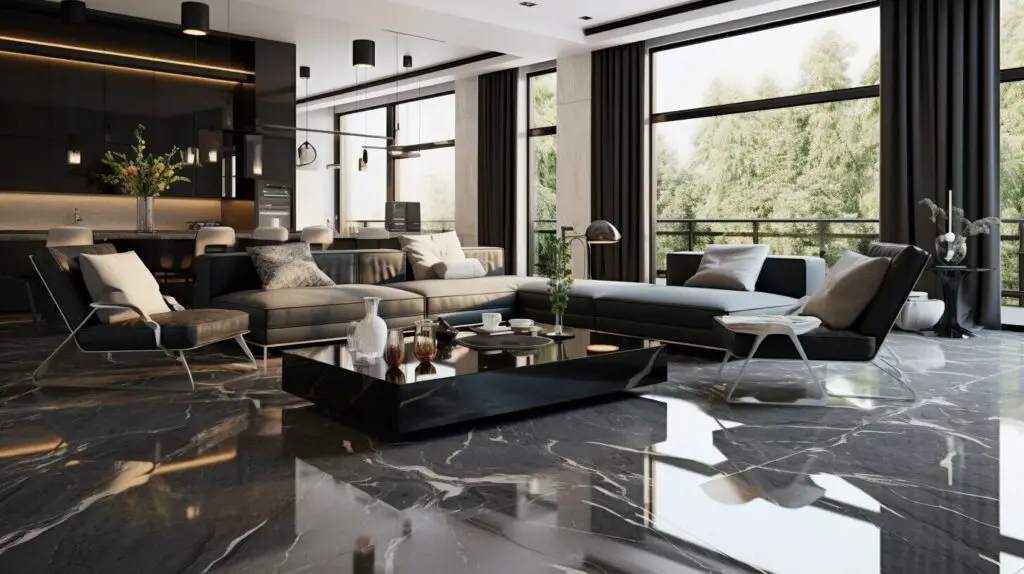
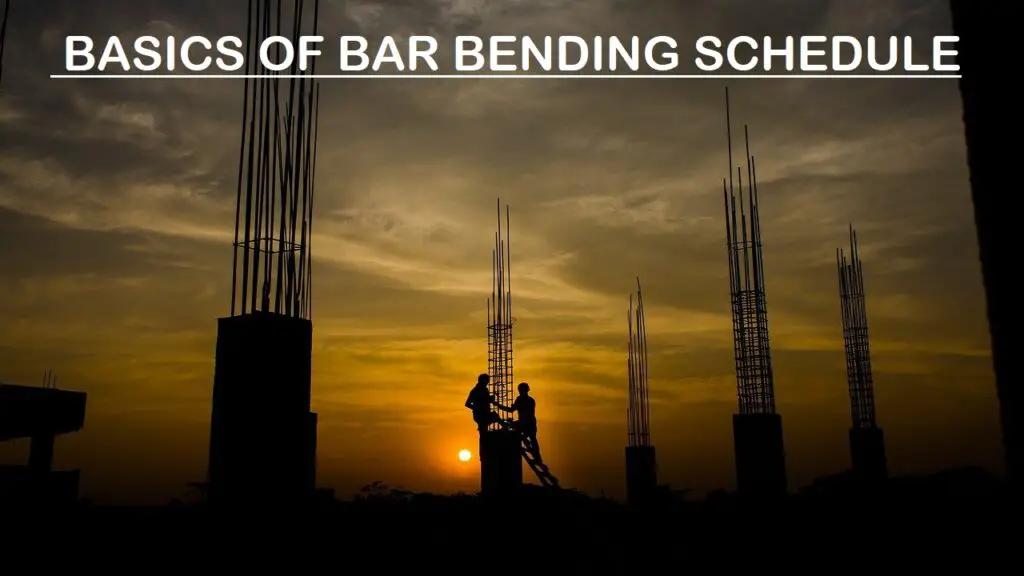
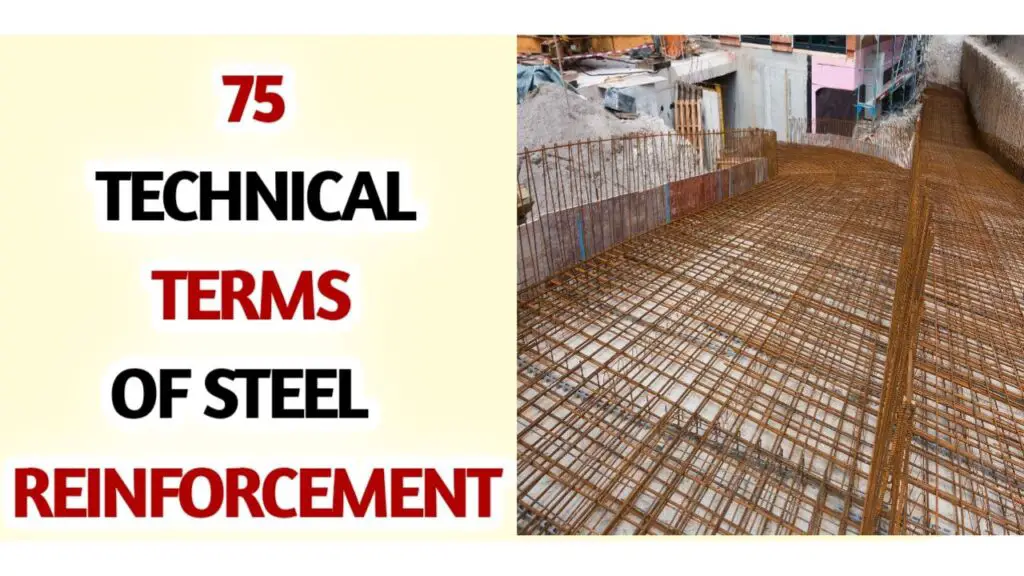
Pingback: 3 Ultimate Benefits of Laminate Flooring for Homes